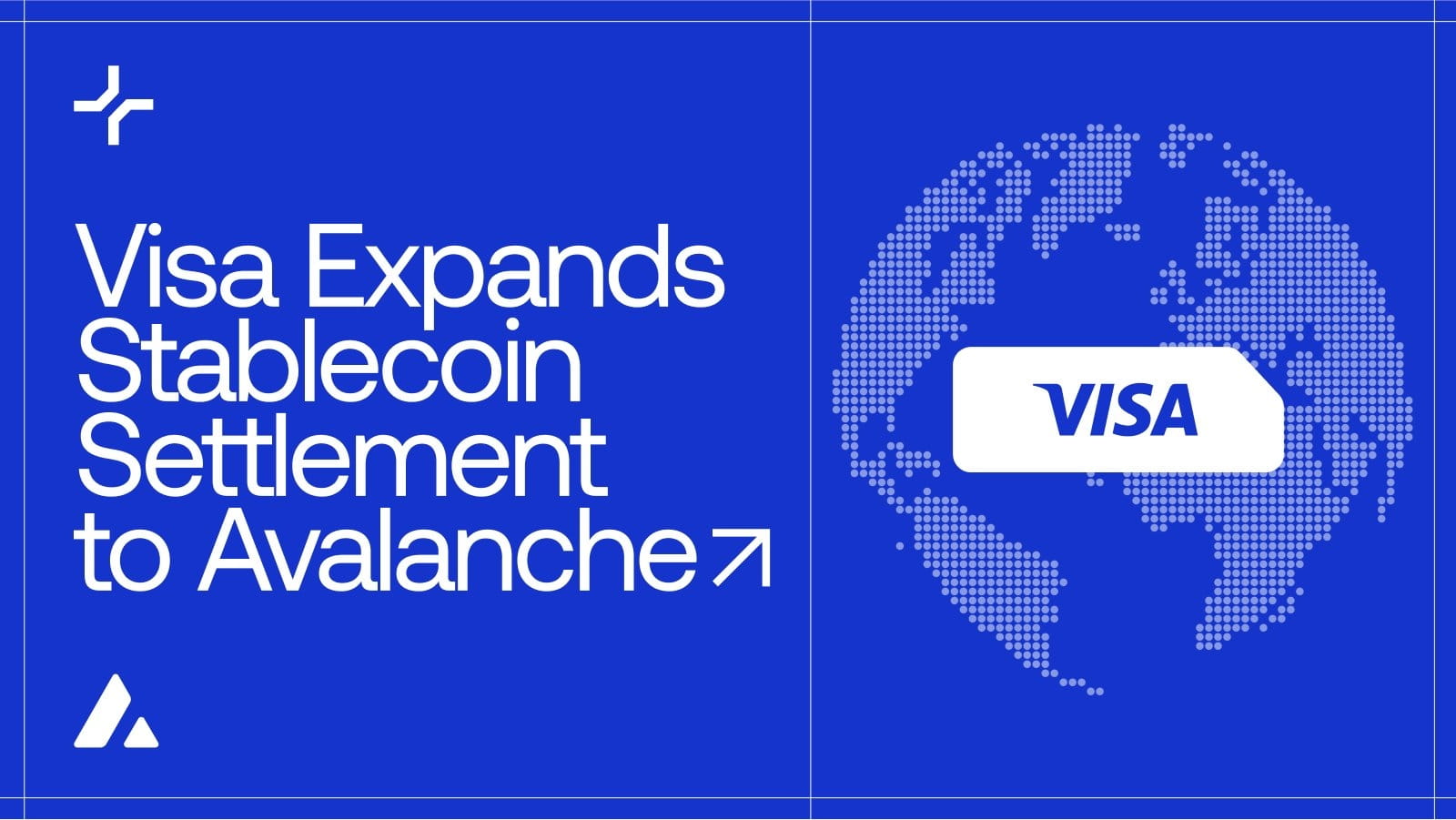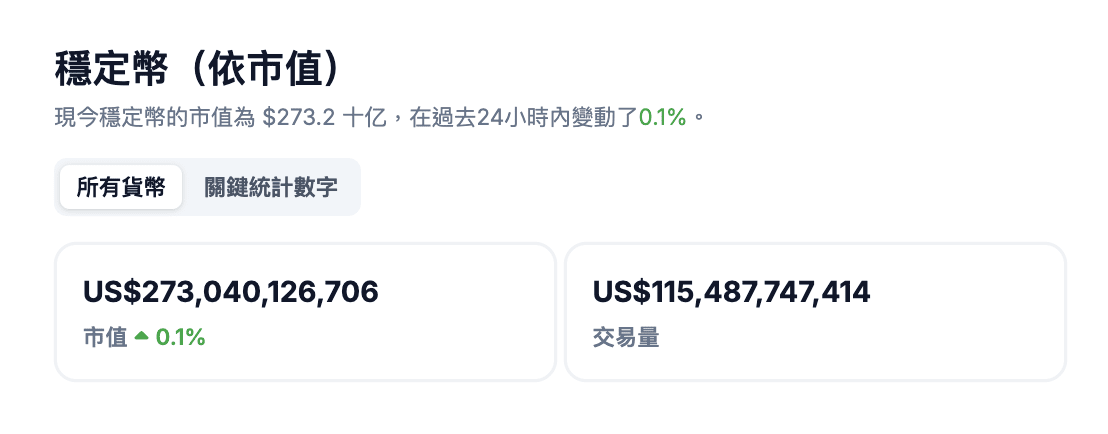Visa expands its stablecoin platform, adding three tokens and two blockchains.
Global payment giant Visa announced on Thursday (7/31) a significant expansion of its stablecoin settlement platform, adding support for three stablecoins and two blockchains, further consolidating its leadership in the digital asset payment space. This expansion enables Visa's stablecoin infrastructure to now support four stablecoins and operate across four blockchain networks.
The newly added stablecoins include $PYUSD issued by PayPal, $USDG issued by Paxos, and the euro stablecoin $EURC issued by Circle. These new tokens join the existing $USDC to form Visa's stablecoin support portfolio. In terms of blockchain, Visa added Stellar and Avalanche, forming a four-chain parallel structure with existing Ethereum and Solana.
 Source: Visa. Visa added two networks, Stellar and Avalanche, forming a four-chain parallel structure with existing Ethereum and Solana.
Source: Visa. Visa added two networks, Stellar and Avalanche, forming a four-chain parallel structure with existing Ethereum and Solana.
Notably, the addition of $EURC allows Visa's partners to use euro stablecoins for settlement for the first time, forming a dual-currency support system with the U.S. dollar stablecoin. This expansion builds on Visa's existing global cash management infrastructure, which already supports the settlement of over 25 fiat currencies, providing partners with more flexible cross-border fund transfer options.
The settlement volume in the second quarter exceeded $200 million, driven by regulatory clarity.
Visa's latest quarterly report revealed that transaction volumes settled through stablecoins exceeded $200 million in Q2 2025, demonstrating significant growth in its digital asset business. CEO Ryan McInerney stated that although this figure is modest compared to Visa's total settlement activity, it is of considerable significance.
McInerney pointed out, 'We are still in the early stages, but we do see real potential, which is why we have been investing in the cryptocurrency space, especially in the stablecoin area, for years. We have built a respected team of experts in the ecosystem.'
Visa's all-weather stablecoin settlement program helps accelerate transaction processing speeds and addresses issues of processing time delays and bank delays in traditional cross-border payments.
The improvement of the regulatory environment has provided an important impetus for the adoption of stablecoins. Earlier this month, U.S. President Trump signed the (GENIUS Act), which is the first comprehensive federal framework in the U.S. for the issuance and regulation of stablecoins. The act clarifies the requirements for issuers, reserves, and auditing standards, and establishes clear rules for the use and trading of stablecoins in financial markets. McInerney expressed optimism, believing that the U.S. government, through clearer and more pragmatic regulatory regulations, will benefit not only the U.S. market but also encourage other countries to follow suit.
Programmable payment tools lead innovation, with banks and fintech actively participating.
Visa is developing programmable payment tools aimed at reducing friction in global payments. The company's Visa Tokenized Asset Platform will serve as a foundation for future innovations, allowing banks and fintech companies to issue stablecoins and create programmable financial products such as automatic payments or time-locked transfers.
Further reading
Visa's tokenized asset platform is here! VTAP will launch a pilot next year; what are its features?
The advancing financial giant! Visa launches a tokenized asset platform to help banks enter the blockchain space.
Rubail Birwadker, Visa's Global Growth Product and Strategic Partnerships Director, stated, 'We believe that when stablecoins become trusted, scalable, and interoperable, they can fundamentally change the way money flows globally. Visa is building multi-currency and multi-chain infrastructure to meet the needs of global partners.'
Initially, stablecoins were mainly used by traders to transfer funds without relying on traditional banks, but now banks, large corporations (reportedly including Meta and Amazon), and even state governments in the U.S. have shown interest in issuing stablecoins. These institutions hope to leverage blockchain technology to accelerate payment processing speeds. In April of this year, Visa partnered with Bridge, a payment service provider under Stripe, to launch a stablecoin-linked debit card service in Latin American countries.
The market outlook is positive, with analysts predicting a scale of $2 trillion.
According to data from CoinGecko, the current stablecoin market size is approximately $273 billion, but analysts predict it could grow to over $2 trillion in the coming years. This forecast reflects the growing acceptance of stablecoins as a cross-border payment solution by institutions and enterprises.
 Source: CoinGecko. The stablecoin market size is approximately $273 billion.
Source: CoinGecko. The stablecoin market size is approximately $273 billion.
Visa's expansion strategy is aimed at addressing the growing demand from developers, banks, and merchants for a more interoperable and flexible settlement layer.
Since Visa began supporting $USDC on Ethereum in 2021, the company has continued to launch multiple cryptocurrency-related businesses. The company aims to lower the barriers to entry for wallets and developers by supporting more stablecoins and blockchains, responding to the growing demand for interoperable stablecoin payments.
As the global regulatory framework gradually takes shape, multiple regions, including the EU and Hong Kong, are formulating clear regulatory standards for digital assets. Visa sees opportunities to further expand its cryptocurrency infrastructure. McInerney hinted that more product launches are planned, pointing out that an upcoming product showcase will focus on Visa's latest achievements in digital asset settlement and programmable finance.
'Visa advances multi-chain strategy! Adds three currencies and two blockchains to expand stablecoin payment services.' This article was first published in 'Crypto City.'
